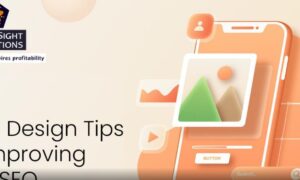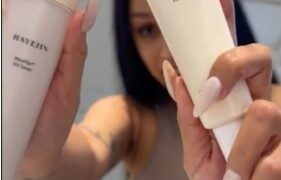Are you tired of submitting lackluster tech proposals that fail to impress clients? Do you yearn to master the art of crafting captivating presentations that sway and resonate with your audience? Look no further, for in this article, we will delve into the realm of UX/UI design and unveil how it can breathe new life into your tech proposals. Whether you’re a seasoned professional or a newcomer, grasping the intricacies of user experience (UX) and user interface (UI) design will provide your proposals an unprecedented edge. Prepare yourself as we uncover the clandestine techniques behind formulating irresistible tech proposals that etch an enduring mark on clients’ minds.
Introduction to the Essence of UX/UI Design
To create compelling tech proposals, a foundational comprehension of UX/UI design is imperative. UX/UI design revolves around curating an exceptional user experience for your audience. It encompasses aspects ranging from the arrangement of your website or application to the ways users interact with it.
Forging a commendable UX/UI design commences with discerning your users and comprehending their objectives. Once you’ve gained this insight, you can strategize how to structure your site or app for user-friendliness. This entails aspects such as ensuring intuitive navigation and utilizing clear, concise language throughout.
Moreover, it’s crucial to acknowledge that UX/UI design is an ever-evolving domain. As novel technologies emerge, the adaptability of your designs becomes paramount. Remaining abreast of contemporary trends and welcoming fresh concepts is imperative.
By adhering to these principles, you can construct tech proposals that are not only visually enthralling but also user-friendly and enjoyable for your audience.
Leveraging UX/UI Design to Craft Compelling Tech Proposals
In the realm of creating tech proposals that leave an indelible impression, integrating UX/UI design can be a game-changer. By contemplating the user experience and the visual layout of your proposal, you can sculpt a document that’s not only facile to comprehend but also aesthetically pleasing.
Key considerations when infusing UX/UI design into your tech proposal encompass:
- Layout: How will your proposal be structured on the page? Will it facilitate effortless scanning and locating of pertinent information?
- Whitespace Utilization: Overwhelming text density can be off-putting; employing whitespace strategically can render content more digestible.
- Headings and Subheadings: Employ these to steer readers through your proposal and aid their quest for specific information.
- Visuals and Infographics: Embedding visuals can break the monotony of text and elucidate intricate concepts.
By heeding these principles, you can fabricate a tech proposal that seamlessly amalgamates information dissemination with visual allure – two pivotal facets in setting your proposal apart from competitors.
Advantages of Employing UX/UI Design in Proposals
Employing UX/UI design in proposals furnishes an array of advantages. Foremost, it bestows aesthetic appeal upon your proposal, augmenting its prospects of standing out in the competitive landscape.
Furthermore, a meticulously designed proposal can streamline the proposal process for both you and your prospective client. By presenting information in a comprehensible format, you contribute to time-saving during a typically frenzied period.
Effective UX/UI design guarantees the proposal’s accessibility and user-friendliness for all stakeholders. Attending to details like font size, color contrast, and whitespace ensures that the proposal is navigable and legible for all parties involved.
Nurturing Engaging Content through UX/UI Design
Similar to any design endeavor, concocting engaging content for your tech proposal commences with a grasp of your audience. Who will be perusing your proposal? What are their aspirations and quandaries? Once this comprehension is honed, you can deliberate on content that resonates with them.
Your tech proposal should be lucid, succinct, and easily comprehensible. Avoid delving into industry jargon or technical vernacular that might alienate readers. Focus instead on elucidating concepts in straightforward terms. Employ potent headings and subheadings to fragment content, facilitating swift scanning. And remember the efficacy of visuals – pairing information with images or infographics enhances retention.
The overarching tone and style of your proposal should parallel your product or service. A cutting-edge technological offering warrants a modern, forward-looking proposal, while a traditional product may demand a more conventional approach.
By adhering to these guidelines, you can leverage UX/UI design principles to forge enticing, immersive content for your tech proposals, effectively setting them apart.
Exemplary Instances of Tech Proposals Elevated by UX/UI Design
There exists a multitude of avenues to incorporate UX/UI design into tech proposals, thereby amplifying their allure. Here are a few examples:
- Utilizing clear, comprehensible language suitable for all readers.
- Embracing a clean and uncluttered design.
- Employing high-caliber visuals to illustrate pivotal points.
- Prioritizing the user experience during the proposal’s design.
- Ensuring the proposal’s responsiveness and mobile compatibility.
Guidelines and Optimal Approaches for Crafting Effective Proposals with UX/UI Design
The integration of UX/UI design can be a pivotal differentiator in the pursuit of impactful proposals. By factoring user experience and interface design from inception, you craft a proposal that isn’t solely technically robust, but also visually enticing and effortlessly navigable. Here are guidelines and prime practices for leveraging UX/UI design to shape persuasive tech proposals:
Commence with Fundamentals: Ensure your proposal encompasses all essential information indispensable for decision-makers to make informed choices. This encompasses a comprehensive project timeline, deliverables, costs, and the like.
Embrace Simplicity: Avoid the temptation to inundate your proposal with intricate technical terminology or superfluous details. The objective is to distill your proposal into a comprehensible, reader-friendly format.
Strategic Visual Integration: Visuals are formidable tools; judiciously interspersing them throughout your proposal to elucidate key concepts is invaluable. This could encompass charts, graphs, screenshots, infographics, and more.
Cultivate Interactivity: Infuse interactivity into your proposal through hyperlinks, rollovers, videos, and the like. This sustains reader engagement and interest in your narrative.
Meticulous Attention to Detail: Beyond aesthetic considerations, meticulous attention to grammar, punctuation, and overall organization is pivotal. These subtleties significantly impact your proposal’s reception.
Test and Refine: Dedicate time to testing and refining your proposal to maximize its effectiveness. This entails garnering feedback from users, effecting changes based on their input, and iterating until satisfaction is achieved.
By adhering to these guidelines and premier practices, you can forge compelling proposals through the prism of UX/UI design, ultimately aiding in clinching business opportunities and eclipsing the competition.
Conclusion
UX/UI design wields profound influence in crafting persuasive tech proposals. It enables you to orchestrate your proposal into a resonating narrative, presenting pivotal information that elucidates the rationale behind investing in your product or service. Additionally, it facilitates the creation of an interactive presentation that’s visually striking and immersive, fostering a lasting memory of your concepts and solutions. By embracing the manifold potential of UX/UI design, you ensure that your proposal rises above the competition and endures in the minds of your audience.



































